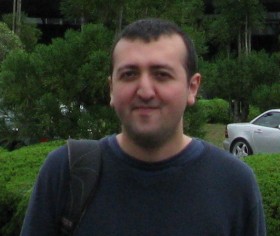
VASC Seminar
January

3:00 pm to 4:00 pm
Event Location: NSH 1507
Bio: Alper Ayvaci received his Ph.D. in Computer Science from University of California, Los Angeles in August, 2012 under the supervision of Prof. Dr. Stefano Soatto. He is currently a postdoctoral scholar at the same institute. His general research interests are in computer vision and applications of geometry and machine learning in this field. He is most interested in the computer vision problems such as optical flow estimation, occlusion detection, object detection, tracking and recognition in video and video super-resolution. He also holds a M.Sc. degrees in Computer Engineering from Istanbul Technical University, Turkey.
Abstract: We tackle two computer vision problems that are tightly coupled. The first one is detection of occluded regions in a video stream with estimation of optical flow simultaneously. Under the assumptions of Lambertian reflection and static illumination, the task can be posed as a variational optimization problem, and its solution is approximated using convex minimization. We describe efficient numerical schemes that reach the global optimum of the relaxed cost functional, for any number of independently moving objects, and any number of occlusion layers.
Second, we describe a computationally efficient scheme segmenting a short image sequence into an unknown number of objects. We exploit our work on occlusion detection to bootstrap an energy minimization approach with depth ordering constraints. The minimization problem can be converted into a linear program with introduction of auxiliary variables and solved efficiently.The proposed cost function integrates both appearance and motion features, and also achieves model selection in a minimum-description length (MDL) setting. We also introduce a method that extends this approach by including appearance models for object categorization. This framework simultaneously segments objects and assigns a category label to them.